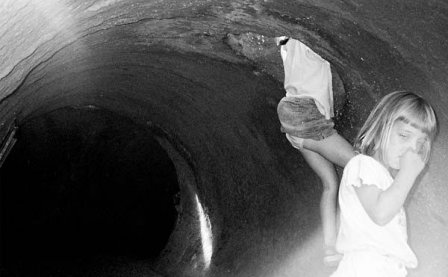Sometimes, at night, I sense something, and then I don’t. I don’t know what exists in the dark, although I’m sure something does. A revenant, undoubtedly. A returner from the dark: just as Proust’s narrator finds his childhood through a madeleine dipped in tea or as Sebald’s Austerlitz finds his orphanhood in an abandoned room in an English railway station, a life already lived comes back unexpectedly. What more is a ghost, anyway, than the intimate realization of the past interrupting the present?
The Revenant Diary is Mark Van Hoen’s ghost story. “[The] record was already mostly done before I found out,” he said in a recent interview. The voices were added later. It is now well known that his adoption had been covered up and discovered accidentally during his emigration to the United States. But while his last album, Where Is The Truth, was an explicit attempt at processing what had been discovered, The Revenant Diary, composed in the darkness of unknowing, sounds more like a question weighed down in the unconscious, a sense, something before the words that speak articulate pain — buried deeply. It’s unsurprising, then, that from material already composed in the dark, he adds a voice. First, in “Look Into My Eyes,” a broken, unintelligible voice that drifts from right-to-left through the channels of a headphone. Second, in “Don’t Look Back,” the titular words repeated through the slow walk of the beat: “don’t look back, don’t look back (back).”
In the same interview, Van Hoen says, “I am a firm believer that your musical taste and identity is formed […] in your teenage years. The rest of my musical life will be spent trying to gain the expertise to communicate what’s in my head, or to get closer to the source, as it were.” In 1982, he recorded a song that, when happened upon nearly three decades later, would provide the aesthetic foundation for The Revenant Diary. Composed and recorded and produced, minimally, as though in a memory of his earliest recordings, as a teenager, he put together the album. There is an initial simplicity to the album that morphs, gracefully, into an understatement. The album is expressing a melancholy without sentimentality or histrionics, and a nostalgia without foundation in a gimmicky appropriation of cultural artifacts. The aural texture is a woven assemblage of ambient synth patterns, warm basses, cold arpeggios, and certain Kraut-psych sensibilities into a modest, but rich electronic music. It might be “teenage” in its orientation, but it is an adult album in its serious and mature rumination — and affirmation.
Throughout the final track, the voice sings out, over and over again over nine minutes of spectral praise, “holy me!” One voice becomes two, and then becomes three, and more, while a muddled organ plays sporadically. No narcissistic anthem, this is the subtle hymn of a displaced man, questioning in the dark, declaring himself, orphaned, teenage, all of it, in a singular, mature, and maturing whole. It’s as clear of a statement I can think of about what a good album he’s made.
More about: Mark van Hoen




